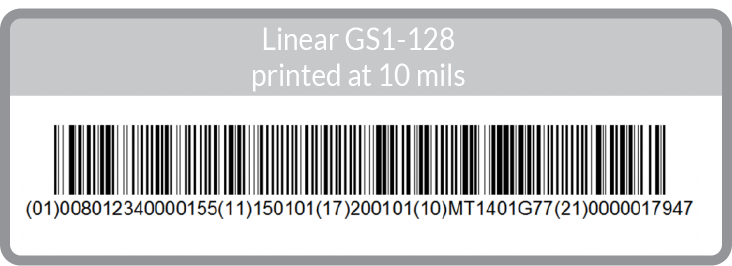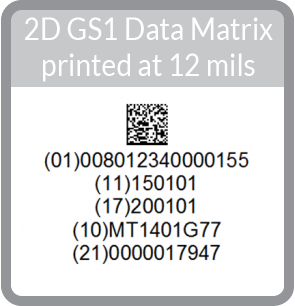Linear vs 2D Barcodes
Barcode size and its impact on device packaging has been a concern for a number of our UDI clients. The volume of data required for UDI means that a traditional linear barcode like the GS1-128 can take up significant space. This presents a big problem for companies with smaller packaging and companies that desire a cleaner package design. Fortunately the FDA UDI requirements allow for use of 2-dimensional (2D) barcodes. Compared to linear barcodes, 2D barcodes can encode all of the required UDI data fields in a significantly smaller area, allowing for easier integration into device packaging. The GS1 UDI implementation has several acceptable 2D symbologies, but we will look at the GS1 Data Matrix.
The example below demonstrates the size differences between a 2-dimensional GS1 Data Matrix barcode and a linear GS1-128 barcode that encode the same data. Examples assume properly formatted GS1 type symbols following GS1 acceptable sizing.
Size Differences
Both of these barcodes encode a GTIN, Manufacture Date, Expiration Date, Lot Code, and Serial Number. The linear barcode on the left, printed at 10 mils, measures 4.5″ wide x 0.5″ tall. The 2D barcode on the right, printed at 12 mils, measures under 0.4″ wide x 0.4″ tall.






